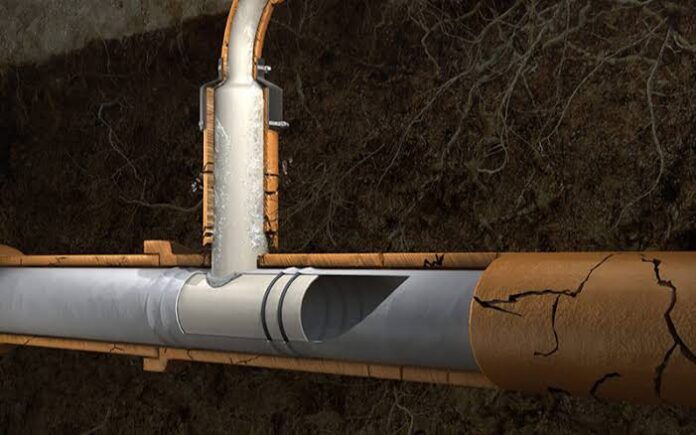Trenchless drains and sewer lines are underground waste management systems that don’t require extensive excavation. Trenchless technology makes it easier to perform drain cleaning with little interference to the ground above. It also allows for the rehabilitation of decaying pipelines through techniques like pipe relining and bursting. Here are some of the things you can expect from trenchless drain or sewer line repair services:
Camera Inspection
During trenchless inspections, plumbing teams use cameras that capture images of the pipes’ interiors without digging them up. The technicians use a flexible rod that contains a high-quality camera to capture images of the pipe system. The camera relays the video feed of the pipe to a monitor where technicians can get a clear perspective of the pipe. Camera inspections assist in determining problems such as cracks, blockages, tree root encroachments, or pipe bursts. The cameras generate relevant data for forecasting the repairs and necessary drain cleaning methods. The video feed can be recorded for future reference.
Hydro Jetting
Hydro jetting involves using high-pressure water to remove blockages and other materials in drains and pipes of different sizes. A specialized nozzle is inserted into the pipe, and pressure is applied until the forceful flushing of water washes away debris, grease, minerals, and even tree roots. Hydro jetting is a more aggressive drain cleaning method than snaking and can restore pipes’ interiors to their original conditions. This method is useful for businesses with extensive plumbing networks or frequent drain clogs. The process is also used as a preventative measure to keep pipes clean and free from blockages in the future. Hydro jetting is environmentally friendly since no chemicals or excavators are used in the process.
Pipe Relining
Commonly referred to as cured-in-place pipe (CIPP), this technique rehabilitates damaged pipes without digging. The service provider places a flexible liner coated with epoxy resin inside the host pipe. The liner is then expanded and solidified by applying heat or ultraviolet light. This process develops a new pipe inside the old one, eliminating small cracks that cause leakages. The pipe relining technique can add several years to the existing pipe systems. It is compatible with a range of pipe materials and can pass through bends or joints in the piping system. Relining is more efficient than conventional pipe bursting since it does not disturb the ground, structures, or landscaping above the pipes.
Pipe Bursting
Pipe bursting techniques involve breaking the old pipes and simultaneously laying new ones in their place. A bursting head passes through the existing pipe with the help of a cable or rod. During its progress, the bursting head destroys the existing pipe, shoving the pieces into the surrounding soil. A new pipe, typically of a higher material standard, such as a high-density polyethylene (HDPE) pipe, is pulled into place behind the bursting head. This method is suitable for substituting entire sections of pipes that are outdated or in poor condition without excavation. Pipe bursting can increase the diameter of an existing pipe, enhancing its flow capacity.
Slip Lining
The slip lining method involves placing a slightly smaller, more flexible pipe inside the damaged pipe. Plumbers push or pull a new pipe, usually made of HDPE or PVC, into the existing pipe. The space between the old and new pipes is usually packed with grout. This technique slightly decreases the pipe’s internal diameter but increases flow because of the smoother surface. Slip lining is ideal for repairing pipes with a large diameter or in cases where other forms of trenchless techniques are not possible. This is an affordable way to increase the lifespan of aging pipelines.
Sectional Point Repair
Sectional point repair services do not require plumbers to replace the whole pipe line when there is local damage. To complete this service, a plumber places a short section of resin-saturated liner in the damaged area with the help of a special bladder. They fill the bladder with water, exerting pressure on the liner and forcing it to stick to the pipe wall. When the resin hardens naturally or with the help of heat, the bladder is deflated or popped. Isolated problems such as cracks, joint failures, and small collapses are handled by sectional point repair.
Explore Drain Cleaning Services
Advanced trenchless technologies enable plumbers to conduct precise assessments and repair sewers and drains without excavation. These methods are more sustainable and economical than open-cut techniques. Trenchless drain cleaning services also prevent groundwater pollution, protecting surrounding residents and ecosystems. Contact a reputable drain cleaning company today to learn more about their trenchless services.



